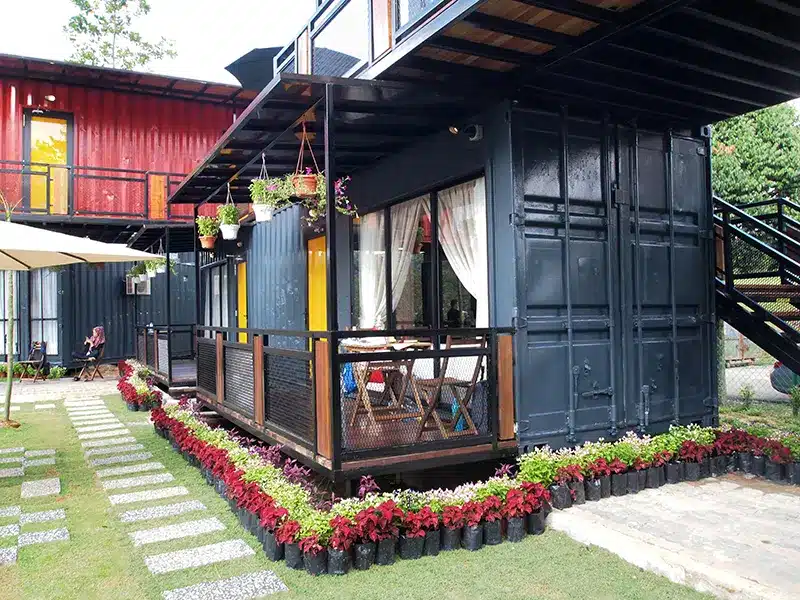Shipping container homes have gained popularity in recent years as a cost-effective and environmentally-friendly housing solution. But how long do these homes really last?
Shipping container homes can last up to 25 years or more if the right materials were used during their construction. Regular maintenance can also help make them last longer.
In this article, we will explore the factors that impact the lifespan of shipping container homes and the maintenance required to keep them in good condition. It’ll give you a better idea of why getting a shipping container home might be better than acquiring a traditional home.
Quick Navigation
- How Long Do Shipping Container Homes Last?
- Factors That Impact The Lifespan of Shipping Container Homes
- How To Maintain A Shipping Container Home
- In Conclusion
How Long Do Shipping Container Homes Last?
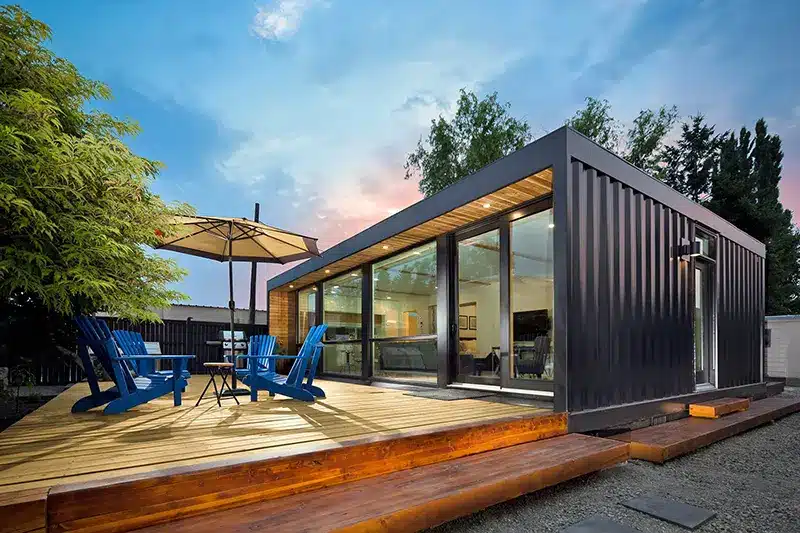
With proper maintenance and care, a shipping container home can last for many decades. In fact, a well-maintained shipping container home can stay in good shape for up to 25 years or more.
However, it’s important to note that not all shipping containers are created equal. Containers that have been used by shipping companies may have wear and tear from transportation, exposure to salt water, and other environmental factors.
“One trip”, “single trip” or new shipping containers are generally in better condition and may last significantly longer than used or recycled containers.
Plus, new containers can be customized by reputable container modification service companies to fit your specific needs and requirements.
This includes features such as insulation, ventilation, and electrical wiring, which can improve energy efficiency and comfort.
Factors That Impact The Lifespan of Shipping Container Homes
Switching to shipping container homes from traditional houses might be tempting, considering all the benefits they offer.
However, since building or purchasing a shipping container house requires both time and money, you need to have a good idea of their lifespan.
In general, there are many factors that can affect how long a container home can last. Let’s divide these factors into two groups- the positive and negative factors.
Positive factors
There are factors that can make shipping container homes last long. Below is a quick list to give you a clearer idea of what they are:
Materials
| Type of steel | Characteristics | Durability | Resistance to Rust and Corrosion |
| Corten Steel | high-strength, low-alloy steel | [rating stars="5.0"] | |
| Galvanized Steel | coated with a layer of zinc | | |
| Mild Steel | low-carbon steel | | |
Containers made of corten steel are designed to withstand harsh weather conditions, resist corrosion, and last for many years.
Corten steel is a high-strength, low-alloy steel. It is also known as weathering steel because it is designed to resist the effects of weathering, such as corrosion and rust.
When used in the construction of shipping container homes, corten steel provides a strong, durable, and low-maintenance foundation.
The weathering steel’s resistance to corrosion and rust helps to ensure that the container home will have a long lifespan with minimal maintenance requirements.
Additionally, corten steel is also highly recyclable, which makes it an eco-friendly choice for building a container home.
Proper insulation and environment
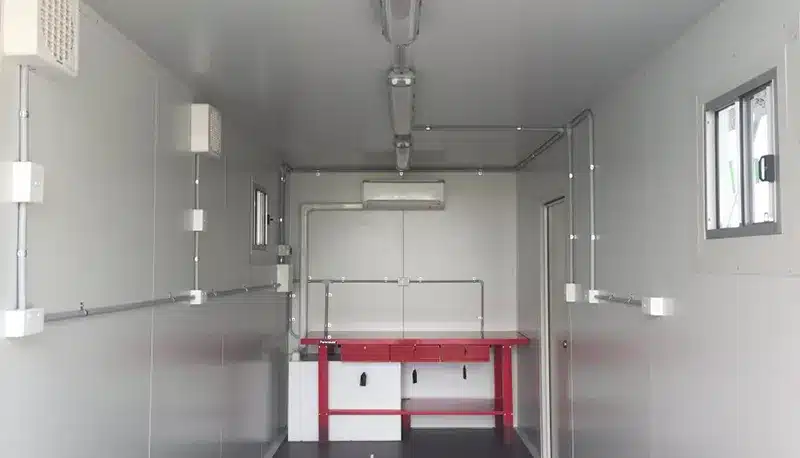
Proper insulation help prevent condensation and temperature changes, which can help to maintain the integrity of the container.
Shipping container homes located in areas with moderate climates and low humidity are expected to experience less wear and tear than those in more extreme environments.
Regular maintenance
Regular cleaning, painting, and sealing can help to prevent rust and corrosion. Being strict with your cleaning schedule can extend the life of your container home, whether they’re used containers or new ones.
Negative Factors
Below are the factors that can weaken the structural integrity of container homes.
Low-quality materials
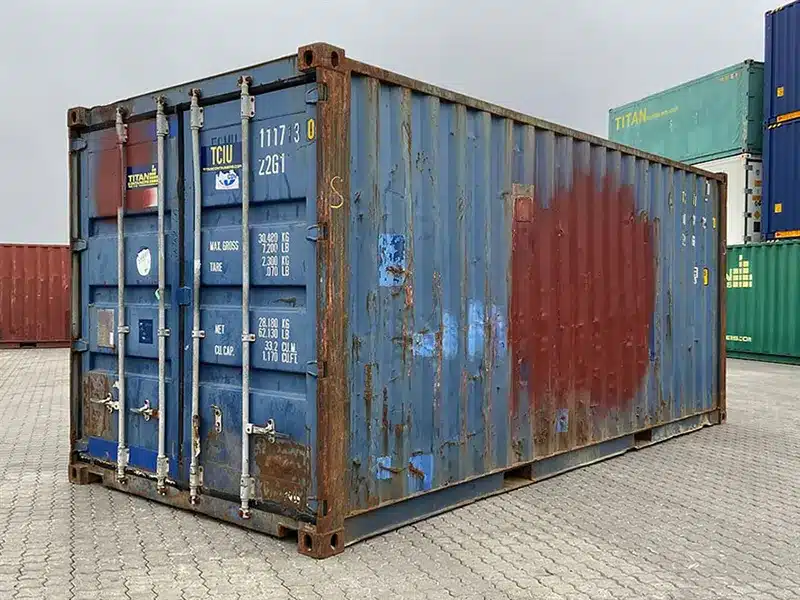
Containers made of mild steel are more prone to rust and deterioration. Whether you are purchasing a new, large shipping container home or a used container, it’s a good idea to avoid those that are made with this material since they have a generally shorter lifespan.
Extreme weather conditions
Shipping container homes located in areas with high humidity, salt air, or extreme temperature changes may experience more wear and tear than those in more moderate climates. As a result, these shipping container homes hold a shorter lifespan.
Natural disasters
Container homes built in areas prone to natural disasters such as earthquakes or hurricanes may also have a shorter lifespan due to the increased risk of damage.
Neglected maintenance
Neglecting maintenance can lead to costly repairs or even the need for replacement. If you want to prolong the lifespan and save unnecessary costs of having a shipping home container, you really have to commit to a regular cleaning schedule.
How To Maintain A Shipping Container Home
Maintaining a shipping container home is crucial to ensuring that it lasts for many years and remains a comfortable living space. Here are some tips for maintaining a shipping container home:
Regular cleaning
Dirt, dust, and grime can accumulate on the exterior of the container. These things can lead to rust and corrosion.
To prevent this buildup and keep the container looking good, commit to regular cleaning with soap and water.
The roof of a shipping container is a crucial component, as it protects the interior from the elements. Inspect it regularly for any signs of damage, such as leaks, rust, or debris. Clear any debris from the roof to prevent damage to the surface.
Paint touch-ups
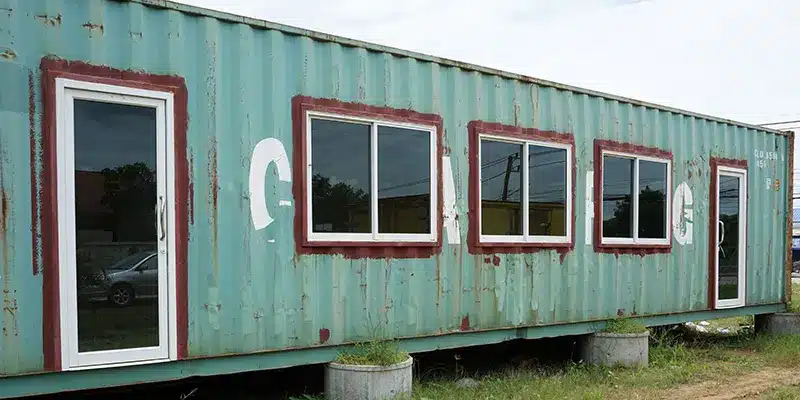
Shipping container homes are often painted to protect them from the elements. Regularly inspect the exterior of the container for any signs of chipped or peeling paint, and touch up these areas as necessary to prevent rust and corrosion.
This is particularly important if you’re going for a used shipping container and you want to avoid further corrosion and deterioration.
Sealing
Sealing the container’s joints, corners, and edges with silicone or other sealants can help prevent water from entering the container and causing damage.
This is something you have to pay close attention to if you’re interested in using old shipping containers as your house.
Insulation and ventilation
Proper insulation helps to regulate the temperature inside the container and prevent condensation, which can lead to rust and corrosion.
Doors and windows are key components of a shipping container home, as they provide access and ventilation.
Regularly inspect the doors and windows for any signs of damage, such as leaks or broken hinges. Lubricate any moving parts to ensure that they operate smoothly.
Pest control
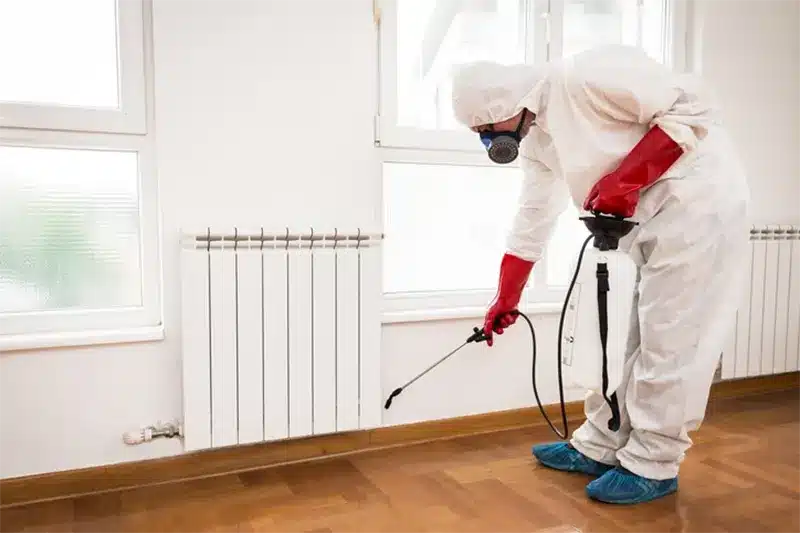
Pests can be a common problem in many shipping container homes, especially if the container is not properly sealed or if there are gaps or cracks that allow pests to enter.
To pest-proof your shipping container home, start by sealing all gaps and cracks using caulk or expanding foam insulation. Install screens on doors and windows to prevent pests from entering the home while still allowing for ventilation.
Proper food storage is essential to prevent attracting pests into your home. Keep all food in airtight containers and dispose of any food waste promptly.
Regularly clean the interior and exterior of the container to make sure that there are no crumbs, spills, or debris that could attract pests.
Consider using pest control treatments such as traps, baits, or sprays to control any existing pest problems or to prevent future infestations. Make sure to follow the instructions carefully to avoid any harm to humans or pets.
Some natural deterrents such as peppermint oil, lavender, or cedarwood can help to keep pests away from your home. Place these materials in strategic areas or use them in cleaning solutions to help repel pests.
Foundation maintenance
The foundation of a shipping container home is an essential component that supports the weight of the entire structure and keeps it level and stable.
Proper foundation maintenance is crucial to prevent damage and structural issues and ensure its longevity.
Regular inspections of the foundation are essential to identify any signs of damage, settling, or shifting. Check for any cracks in the concrete or signs of erosion around the foundation.
Address any issues promptly to prevent further damage to the container and to ensure that the foundation remains level and stable.
Concrete slab foundation

Make sure that the drainage system is functioning correctly to prevent water buildup around the foundation. Water buildup can lead to erosion and damage to the foundation over time.
Regularly inspect and maintain the drainage system to prevent any water-related issues.
Raised foundation
Regularly inspect the support posts and beams of your container homes for any signs of damage or deterioration. Replace or repair any damaged areas as soon as possible to ensure their stability.
It’s also essential to ensure that the container homes are properly anchored to the foundation to prevent them from shifting or moving during harsh weather conditions or even earthquakes.
Make sure that the anchor bolts or straps are in good condition and that they are tightened to the appropriate torque specification.
HVAC system maintenance
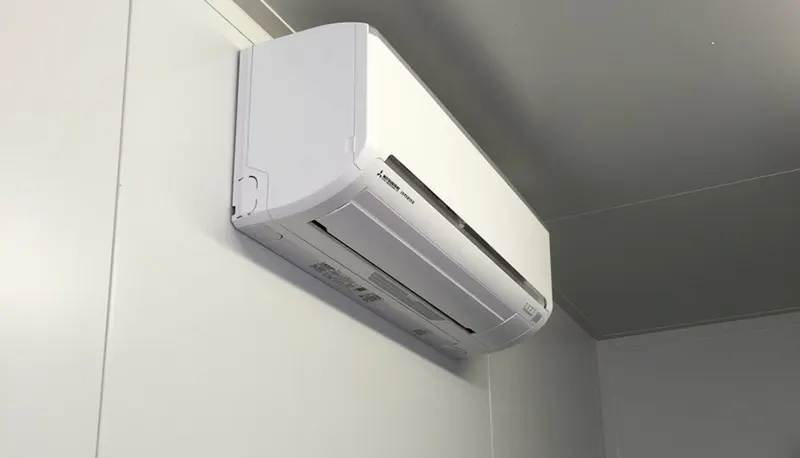
One important task is changing air filters regularly, as this can maintain optimal air quality and system efficiency. Dirty filters can cause the system to work harder and lead to higher energy bills.
Another key task is to regularly clean the air ducts to remove any debris, dust, or allergens that may have accumulated over time. Dirty air ducts can cause poor air quality and reduce the system’s efficiency.
It’s also important to check the condenser unit and inspect the refrigerant lines for any signs of damage or leaks.
In addition to these tasks, it’s highly recommended to schedule annual maintenance with a qualified HVAC technician to ensure that the system is functioning correctly and efficiently.
A professional can identify any potential issues and address them before they become major problems in your shipping container home.
Following a discussion on the maintenance of a shipping container home, you might be interested in the detailed comparison of container home vs. tiny home.
In Conclusion
Do shipping container homes last?
In general, the lifespan of a shipping container home depends on several factors, including the quality of the container, the foundation, the climate, and the level of maintenance.
With proper construction and regular upkeep, it’s possible to make shipping container homes last for decades.
It’s important to ensure that steel shipping containers are made of high-quality materials. The foundation should be sturdy and well-maintained. Regular maintenance should also be carried out to address any issues promptly.
By taking these steps, you can extend the lifespan of your container house and enjoy a unique, sustainable, and cost-effective living space for many years to come.

